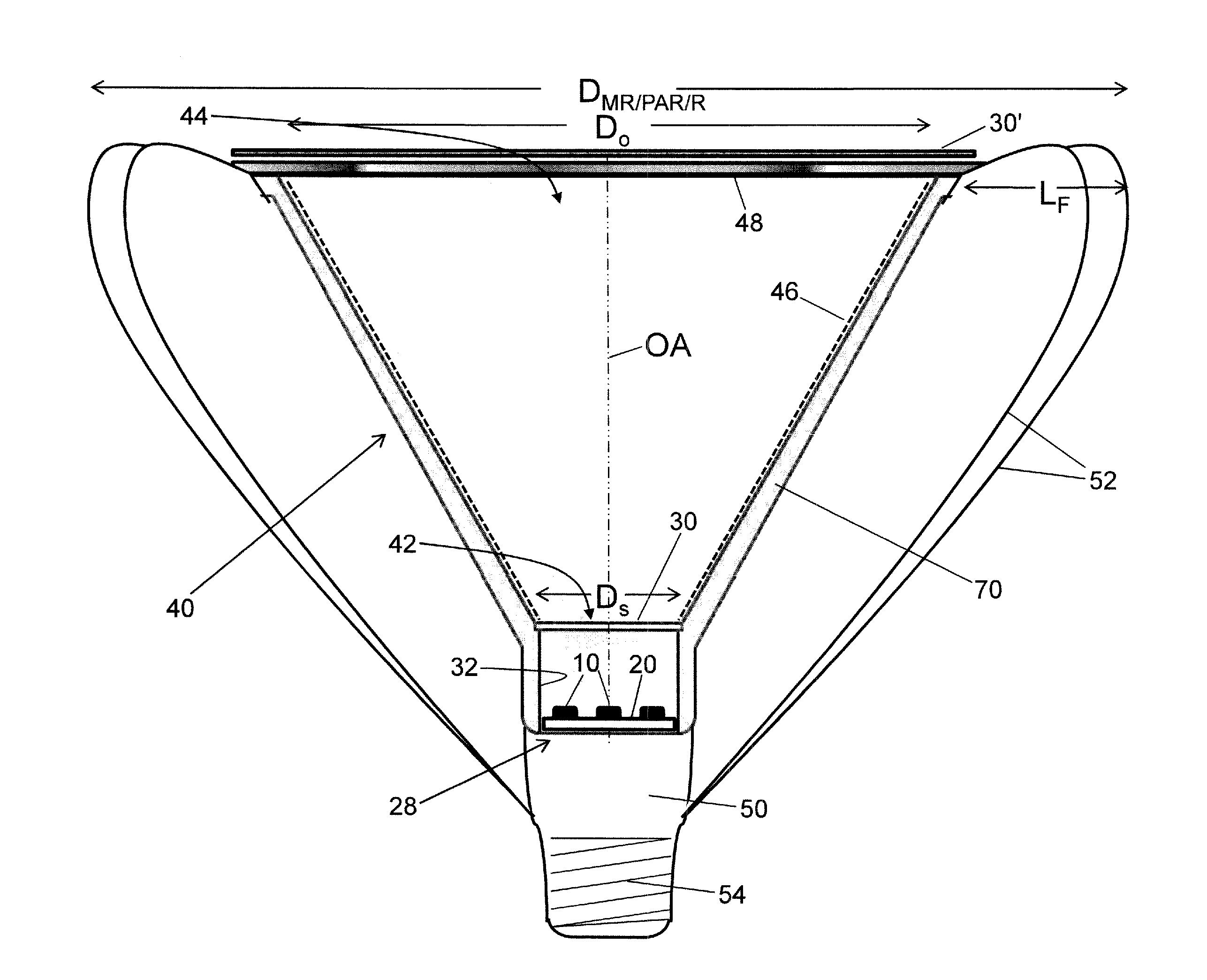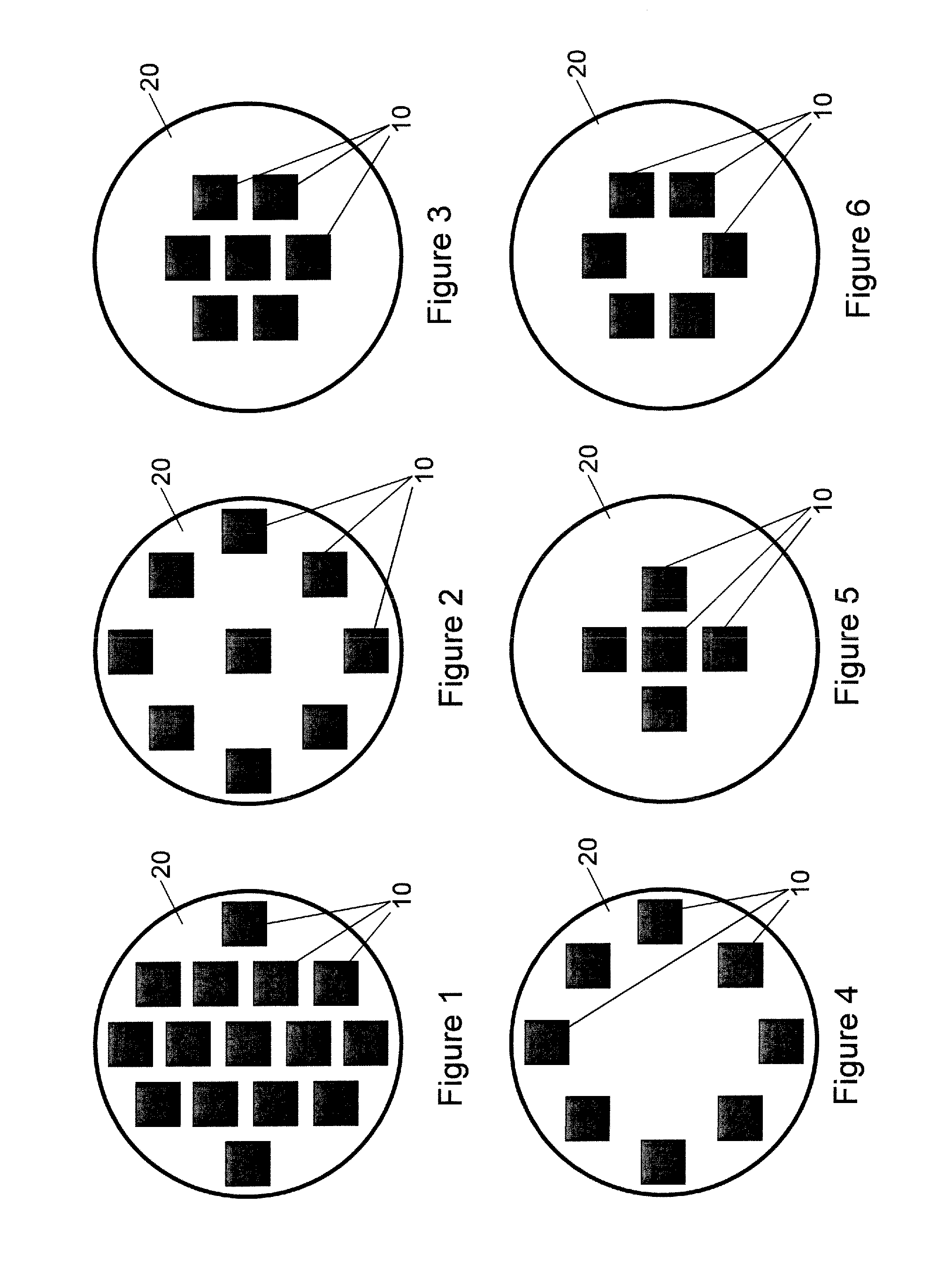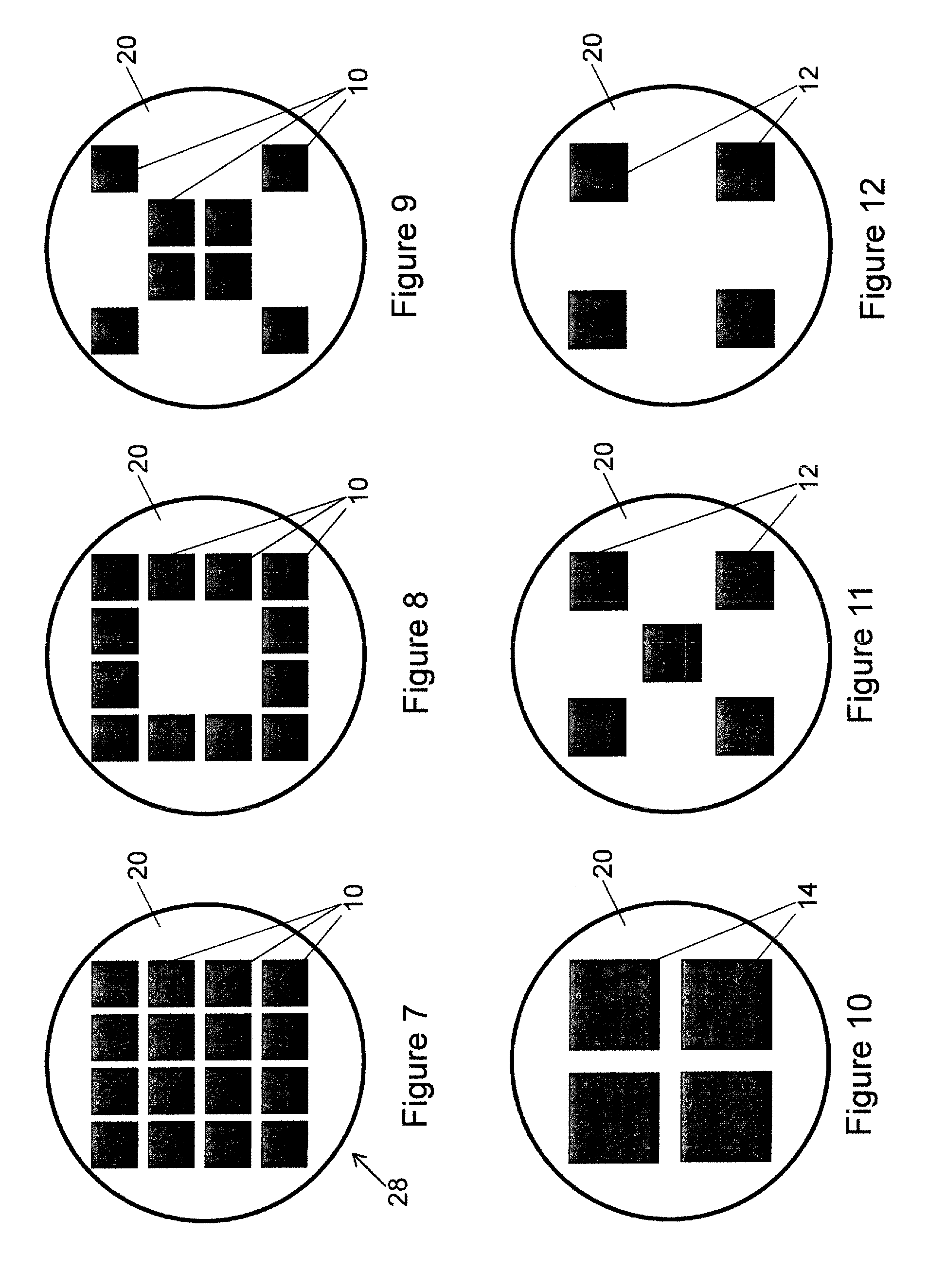Compact light-mixing LED light engine and white LED lamp with narrow beam and high cri using same
a led light engine and led light technology, applied in the field of illumination arts, lighting arts, solid-state lighting arts, can solve the problems of poor efficacy, relatively short lamp life, and reduced response time cos
- Summary
- Abstract
- Description
- Claims
- Application Information
AI Technical Summary
Problems solved by technology
Method used
Image
Examples
Embodiment Construction
[0025]Disclosed herein is an approach for designing LED based spot lights, which provides a flexible design paradigm capable of satisfying the myriad design parameters of a family of MR / PAR / R lamps or compact LED modules that enable improved optical and thermal access to the light engine. The spot lights disclosed herein employ a low profile LED-based light source optically coupled with beam forming optics. The low profile LED-based light source typically includes one or more LED devices disposed on a circuit board or other support, optionally disposed inside a low-profile light-mixing cavity. In some embodiments, a light diffuser is disposed at the exit aperture of the light-mixing cavity. In some embodiments the light diffuser is disposed in close proximity to the LED array wherein the low profile LED-based light source is sometimes referred to herein as a pillbox, wherein the circuit board supporting the LED devices is a “bottom” of the pillbox, the light diffuser at the exit ape...
PUM
 Login to View More
Login to View More Abstract
Description
Claims
Application Information
 Login to View More
Login to View More - R&D
- Intellectual Property
- Life Sciences
- Materials
- Tech Scout
- Unparalleled Data Quality
- Higher Quality Content
- 60% Fewer Hallucinations
Browse by: Latest US Patents, China's latest patents, Technical Efficacy Thesaurus, Application Domain, Technology Topic, Popular Technical Reports.
© 2025 PatSnap. All rights reserved.Legal|Privacy policy|Modern Slavery Act Transparency Statement|Sitemap|About US| Contact US: help@patsnap.com



